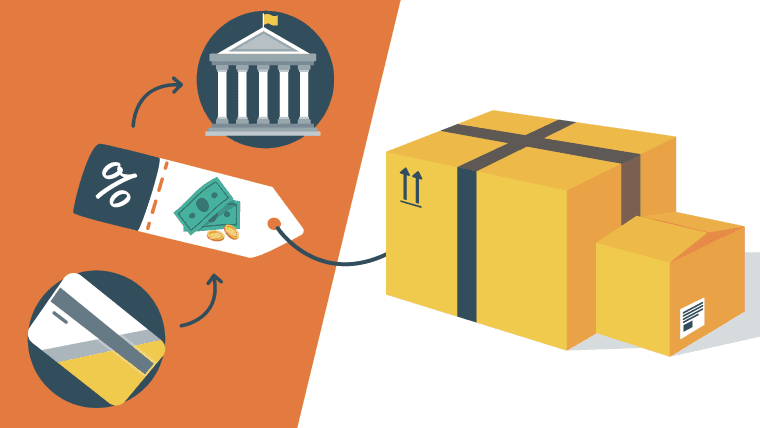You're here:
How to prepare a GST return

Filing a GST return is a relatively simple process, but you must make sure to calculate your input and output taxes correctly. This determines how much you owe the government, or how much they own you as a refund.
Particularly for digital entrepreneurs, SaaS and e-commerce businesses, declaring GST is a standard routine. You file online either once a year, every quarter, or every month.
So it’s even more important that you learn the basics and get it right!
Before we begin, you should know that how you calculate your tax declarations could depend on your accounting practices or special tax schemes for certain products. Such as:
- annual accounting
- cash accounting
- payments on account
- reverse-charge accounting
Calculate input GST
What is input GST?
Input GST is the total amount of Goods and Services Tax you’ve paid on certain business purchases, which you can later get back from the government. This is also referred to as GST credits or GST deductions.
For example, you need a cloud-based accounting solution for your business. You choose a SaaS tool. The product costs $100 per month before tax — subject to a 10% GST rate.
Each month, your input tax is $100 * .1 = $10
So you can claim a $10 GST credit for each month that you are paying for the accounting software.
What counts as a GST deduction?
It’s important to know what qualifies as a GST deduction and to keep all receipts, invoices, and records related to these purchases.
You can reclaim GST if:
- You intend to use your purchase solely or partly* for your business, and the purchase does not relate to making input-taxed supplies.
- You have paid through the reverse-charge mechanism, after buying from another GST-registered business.
- You have a tax invoice from your supplier
*At least Australia allows for this “partly” case. You can only claim a GST credit for the part of the purchase relating to your business use. Other countries might only accept purchases that were 100% business related.
Do not include GST you paid on the following:
- Goods bought wholly for your personal use
- Business entertainment expenses
Check with your local tax authority for a complete list of what’s eligible or ineligible. After that, there are all sorts of tactics to maximize your tax return refund!
Other tips:
- You should deduct GST on any credit notes issued to you
- You can sometimes include GST that was underdeclared or overdeclared on earlier returns. Check with the tax authority!
- Typically you should leave out any amounts paid on separate tax assessments, or amounts that the tax authority already owes you. These will be resolved separately.
When can you deduct GST?
When you earn “the right to deduct” determines in which return period you should claim the GST credit.
This may be before payment of the GST has actually been made. For example, you receive an invoice but won’t pay it for a few weeks.
Or it would be well after the tax has already been paid. For example, you paid to import goods, but they won’t arrive for a few weeks and so you must wait for them to be considered “imported.”
This rule depends on your accounting method and the individual country’s policy. For example, in Australia, you can only get a GST credit for tax that has already left your account and been paid, not for tax you still owe and expect to pay soon.
Calculate output GST
What is output tax?
Output GST is the total amount of Goods and Services Tax you’ve charged and collected through business sales, which you’re expected to remit to the government. This is the standard part of complying with GST.
For example, you sell memberships to your online courses for €40 per month before tax — subject to a 10% tax rate.
Each month, the output Goods and Services Tax for a single membership is €40 * .1 = €4.00
The total sum of output Goods and Services Tax is then the base of what you owe. But then input tax will be subtracted. Some government online tax portals will calculate this for you automatically.
Of course, if your input is higher than the output, then you’re entitled to a refund and you’ll get the difference back in your bank account!
Have invoices and tax records ready
For some countries with GST, you must have specific evidence of a transaction, i.e. you need to have a tax-compliant invoice.
If you want to claim a tax credit, some details of the purchase must be included when you file.
Some countries may override this rule and allow you to make the deduction even without a valid invoice, especially for lower-value goods. Check the local rules wherever you’re registered!
How to prepare for a GST return
Once you have your calculations and records ready, you can file a return pretty quickly. But it’s the preparation of all these numbers that is actually time-consuming!
The best solution is Quaderno tax reports. We help you prepare taxes for the EU and the US, too. We won’t file the return for you, but we do make it possible for you to fill out the forms in mere minutes. Because all the data you need is at your fingertips.
Basically, when it’s time to fill out the return, you can just click on a certain country in the app, and a tax report is produced for you instantly. All the information you need to file is there in one, easy-to-read place. Give it a try with a 7 day free trial.
Note: At Quaderno we love providing helpful information and best practices about taxes, but we are not certified tax advisors. For further help, or if you are ever in doubt, please consult a professional tax advisor or the tax authorities.
